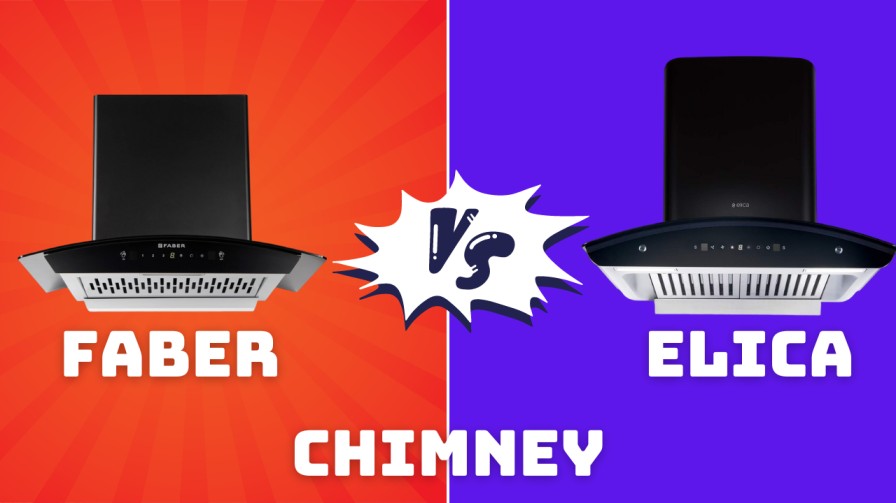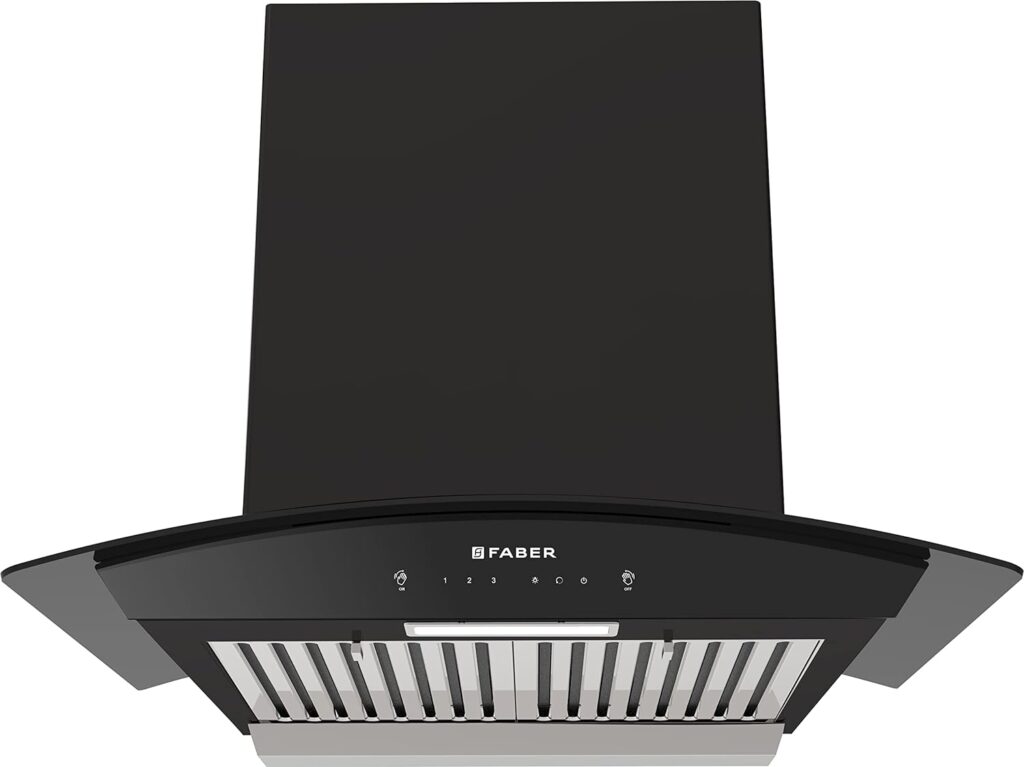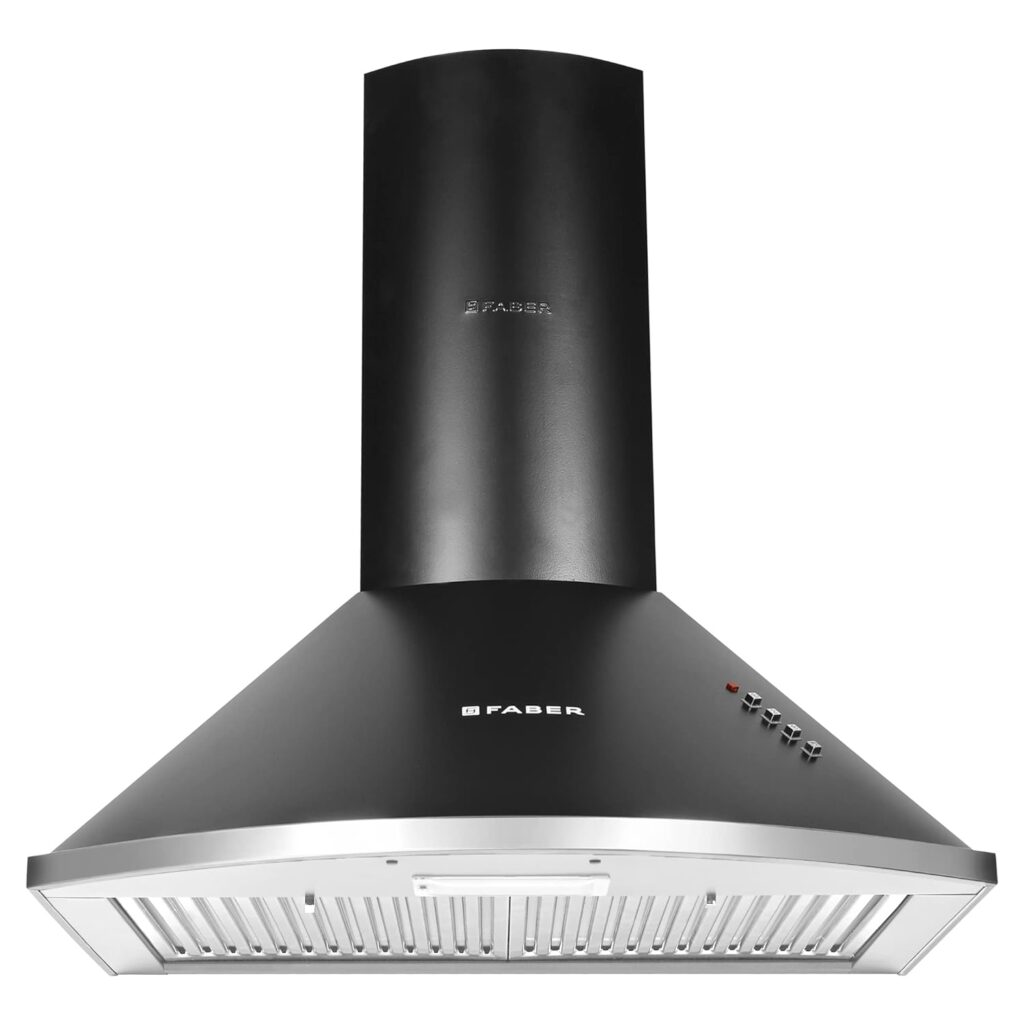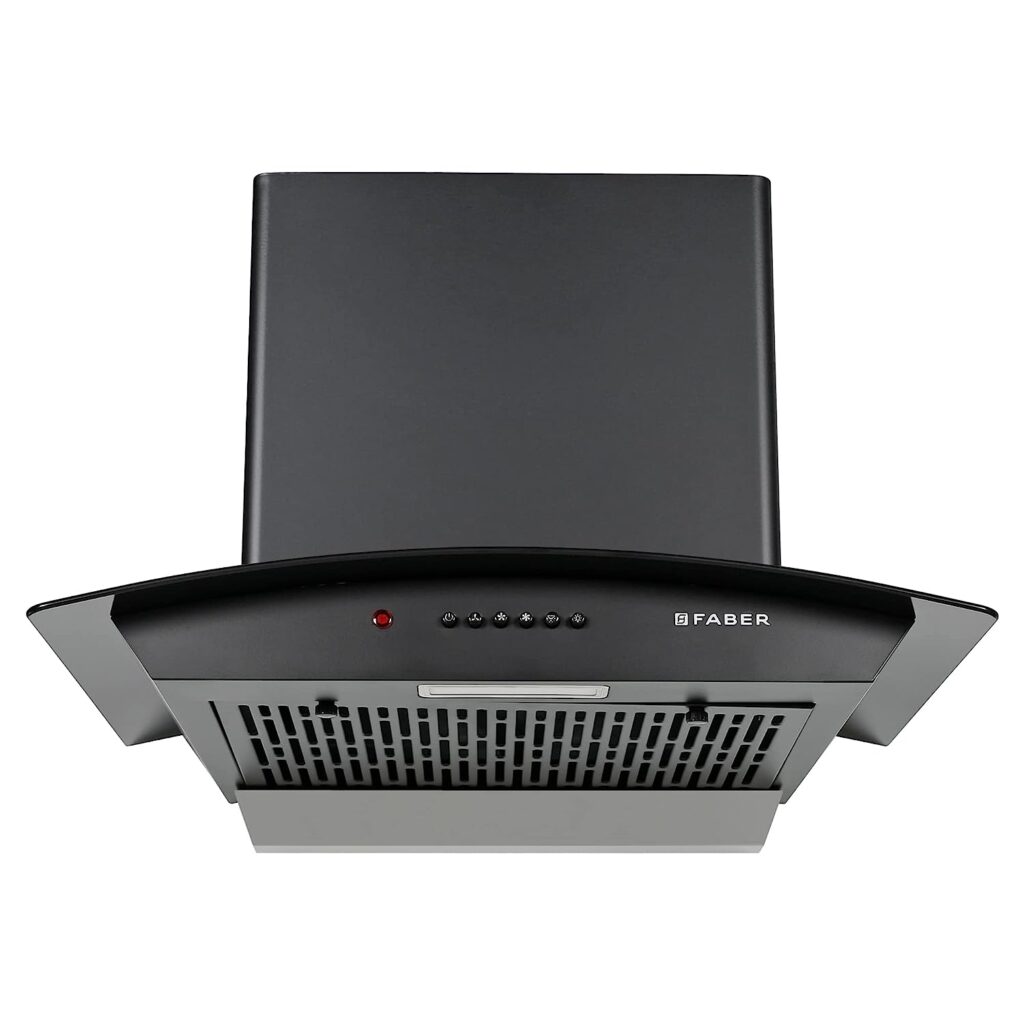“This article contains affiliate links, which means we may earn a small commission if a reader clicks through and makes a purchase.“
Title: Faber Vs Elica Chimney
In India, there are so many chimney brands like Bosch, Glen, Hindware, Faber, Elica, Blowhot, Hafele, Inalsa, and more. Most popular ones in India are Glen Chimneys, Bosch Chimneys, Elica and Faber Chimneys.
But if your budget is tight and you can’t spend more than 19000 Rs. on the chimney, we recommend you choose either a Faber or Elica chimney. Faber and Elica chimneys are not just cheaper but they also dominate the Indian market with higher sale rate and user rating.
Like other chimney brands, Faber and Elica chimneys come in Pyramid shape, T-shape, Angular shape, and curved glass shape.
Before we compare faber and Elica chimneys, let’s learn some important things about chimneys. This information will help you to select the right chimney for your kitchen.
Best Size of a chimney?
A chimney is very important if you want to keep your kitchen neat and clean. Exhaust fan does not prevent your kitchen from smoke or oil spreading, only a chimney can.

Chimneys in India come in 3 standard sizes which are 60cm, 75cm, and 90cm. The most popular chimney size is 60cm. No matter what your kitchen size is, a 60cm chimney fits easily. Just make sure that the distance between gas stove/hob and the kitchen roof top is more than 4 feet.
Also, keep in mind that gas stove/hob size should be less or equal to the standard size of the chimney. Means if your stove is 60cm, go for any size of chimney. But if your stove is around 80cm, then don’t choose a 60cm chimney, buy a bigger size.
Does suction power of a chimney matters?
In simple words, suction power of a chimney refers to how much smoke, grease and oil particles a chimney consumes. Suction capacity/power of a chimney is measured in m3/hour.
The more suction power, the better and costlier the chimney will be.
Most brands’ chimney suction power starts from 1000 m3/hour and goes up to 1500 m3/hour. For home kitchen, suction capacity between 1000 to 1500 m3/hour is enough but for commercial areas, chimneys with 1400 m3/hour and more suction power are a better choice.
If your kitchen area is larger, then buy a chimney with more suction power. Just make sure to place the gas stove below the chimney in a desired position, if you want your chimney to suck full smoke produced through the stove.
Filter in a chimney better or a filterless chimney?
Chimneys are installed in a kitchen with and without filters in India. There are 3 types of filters used in chimneys: Baffle, Cassette, and charcoal filters. Most popular ones are baffle filtered chimneys.
Nowadays, filters are made of stainless steel which are a lot easier to clean. On the other hand, filter less chimneys with no filters are much more efficient than Baffle (filter) chimneys.

Filter less chimneys requires no maintenance at all. Whereas in the case of filter chimneys, it is required to change or clean the filter every 3 to 4 weeks.
One thing we want to clear is that chimneys with filters have more suction power than filter less chimneys. So commercially, it is better to use filter chimneys and in homes it is best to go with filter less chimneys.
Autoclean feature is very IMPORTANT
Before we compare Faber with Elica chimneys, we want to make it clear that we do not buy a chimney without an auto clean feature.
With auto clean feature, oil or grease inside the chimney melts and collects in the oil collector without blocking the air it sucks in. This improves the efficiency and life of a chimney.
Just press the Autoclean button, and the stuck oil will slip into the oil collector. Make sure to clean the oil collector every month.
Faber Vs Elica Chimneys
Coming back to our main topic, let’s compare Elica vs Faber chimneys. Which brand is manufacturing better chimneys and what chimneys models are best in both the brands.

Installation and service: Elica Vs faber
Faber and Elica both have good installation and service presence.
The installation of chimney is not free. You need to pay extra charges (600Rs or more) for installing faber or Elica chimney. Also, if the chimney you are installing is ducted, you have to pay Rs 1200 or more for a ducting kit.
The ducting kit charges may increase depending on duct pipe length. So, Installation charges of both Elica and faber chimneys are almost the same.
Remember, if a technician is coming to install your chimney from a different city, you may have to pay travel expenses (Rs 300 or more) as well.
Elica Vs faber Service
Faber and Elica chimneys have mixed service reviews. 85% of users who use faber chimneys like their service and 15% don’t like it. On the other hand, 82% of Elica chimney users like their service and 18% think Elica service is not good.
These Elica and Faber Chimneys have good service reviews with more positive and less negative feedback. Check them out below.
Problems in Chimneys: Faber Vs Elica
Both faber and Elica Users experience so many issues in chimneys they have installed.
Some Elica Chimney Problems
- Oil drips down even though chimney has autocleaning feature.
- Gesture sensor stops working after a few months of usage.
- High noise level.
Some Faber Chimney Problems
- Motor stopping issues.
- Excessive noise.
Winner: Faber or Elica Chimney
It is not easy to decide which brand of chimney is better: Elica or Faber. But in terms of popularity and higher user ratings on amazon. We think faber chimneys are on the plus side compared to Elica chimneys.
Also, faber has various models of chimneys but Elica has limited number of models. Elica has more installation charges as compared to Faber.
There is also not much difference in the performance and prices of Faber and Elica chimneys.
In the end, we can’t make any brand a winner. Both Elica and Faber are best in their own way. They manufacture great chimneys with high efficiency, improved indoor air quality, and flexibility in installation.
For a ducted chimney, you need a 6″ hole in a kitchen for a duct pipe. And for ductless chimney, nothing is required to install except chimney.
A ducted chimney is better than ductless because they are highly efficient and have high suction power.
The only negative thing about ducted chimney is that you need to pay for the installation kit and service charges.
After purchasing a chimney, make sure to dig a 6″ hole in the wall of your kitchen. This will save the installation time; or else the technician may charge extra.
6″ hole is for exhaust or duct pipe. Call the technician, he will tell at what height to dig a hole for a duct pipe.






